Competitor Backlink Analysis: Decoding the Powerful Strategy
Competitor backlink analysis is a critical part of off-page SEO.
The reason?
It’s important to know how and why your competitors are ranking higher than you for your target keywords.
And backlinks form a crucial part of the ranking factors.
Without them, even the best content can’t help you rank.
Through competitor backlink analysis, you can deep dive into your competitors’ linking strategies and determine the reasons behind their rankings.
But that’s not all.
Using this strategy, you can also discover backlinking opportunities.
After all, if a website is linking to your competitors, it’s likely going to be happy linking to you as well.
So, how can you find such websites by doing competitor backlink analysis?
Let’s find out.

Finding Your Competitors
Now, before you get started with competitor backlink analysis, it’s important to understand who your competitors are in the first place.
Without finding the right set of competitors, you’ll likely end up with faulty results from the competitor backlink analysis.
And before you begin finding competitors, it’s equally important to understand the different types of competitors.
1. Domain-Level Competitors
These are those competitors who compete with your website as a whole in the SERPs. This essentially means that they’re directly competing with you for most of the keywords that you’re targeting.
To find these competitors, you can leverage the Domain Overview tool provided by Semrush. Alternatively, you could use the Site Explorer tool provided by Ahrefs.
We’ll be using Semrush for this.
All you have to do is search for your domain. On doing so, you’ll find a page with loads of information. Here, you’ve got to scroll down to find the “Main Organic Competitors”.
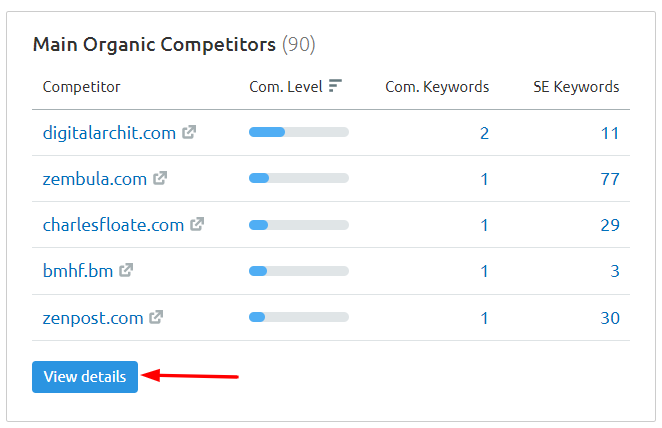
These are the major domain-level competitors of your website. You can click on “View details” to see the entire list.
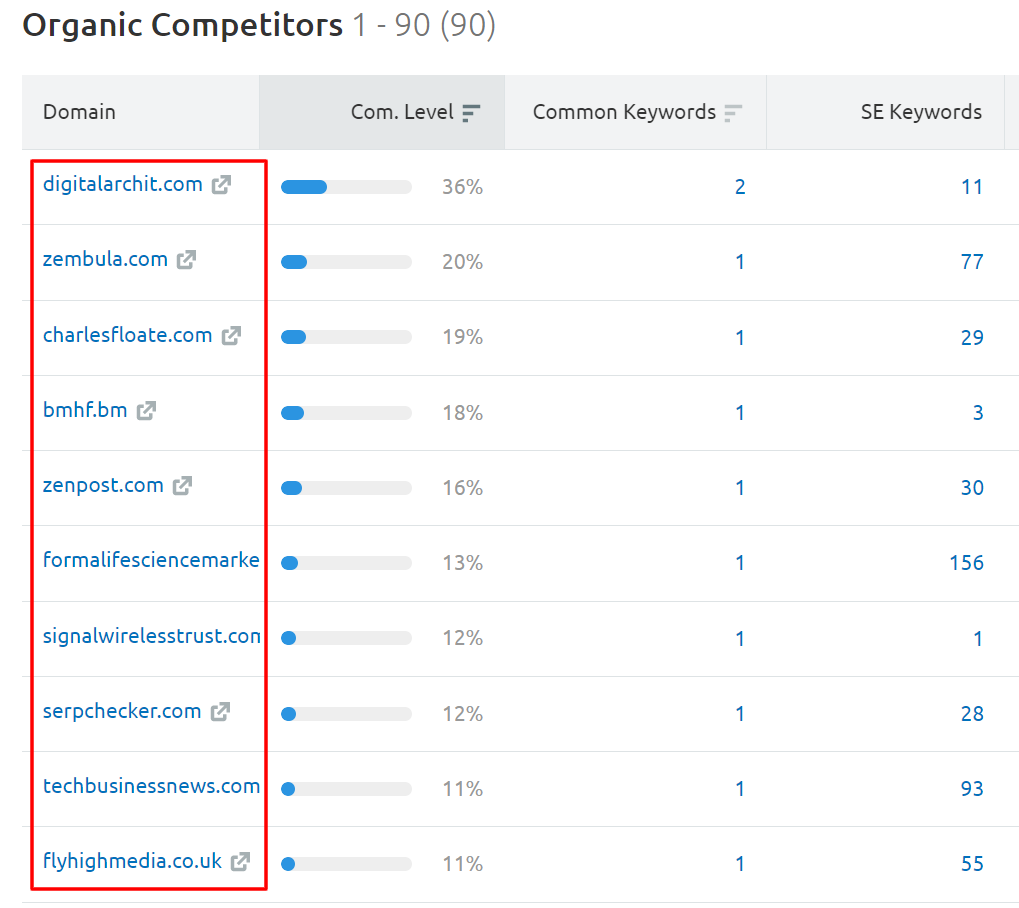
However, one thing that you must bear in mind when looking at domain-level competitors is that they may not necessarily be your real-world competitors. Instead, they might just be competing on many keywords that you’re targeting too.
But if they’re from a similar niche, you should consider them as the websites they get backlinks from might be ideal for you too.
2. Page-Level Competitors
These are those competitors that aren’t competing on a whole lot of keywords. However, they’re still competing with you for certain keywords related to a particular page.
To find these competitors, you can use the Keyword Overview tool in Semrush. All you have to do is enter the primary keyword that you’re targeting and scroll down to find the SERP overview.
You can then scroll through it to find competitors who’ve created content similar to yours. These are your page-level competitors.
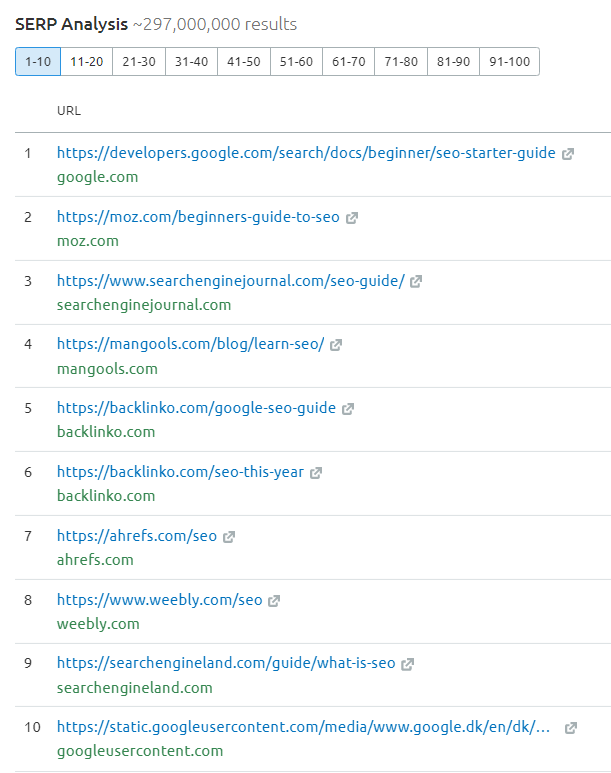
Once you’ve found both these types of competitors, you should create separate lists for each. Your goal should be to conduct competitor backlink analysis for each of these types of competitors to discover potential link-building opportunities.
And on that note, let’s take a look at how you can go about doing competitor backlink analysis.
How to Do Competitor Backlink Analysis
Here’s a detailed, step-by-step guide to help you do competitor backlink analysis to perfection.
1. Analyze Competitor’s Home Page
The first and easiest step in competitor backlink analysis is that of analyzing the home page of your competitors to see the links pointing to it.
But why should you start with the home page?
The reason is simple — loads of people tend to link to the home page of a website
You could use the Backlink Analytics tool on Semrush for this analysis. Start by picking a competitor from your list of competitors and enter the URL of their home page.
On doing so, you’ll get a list of domains pointing to that URL. These are all probable websites that could be linking to your website as well but aren’t.
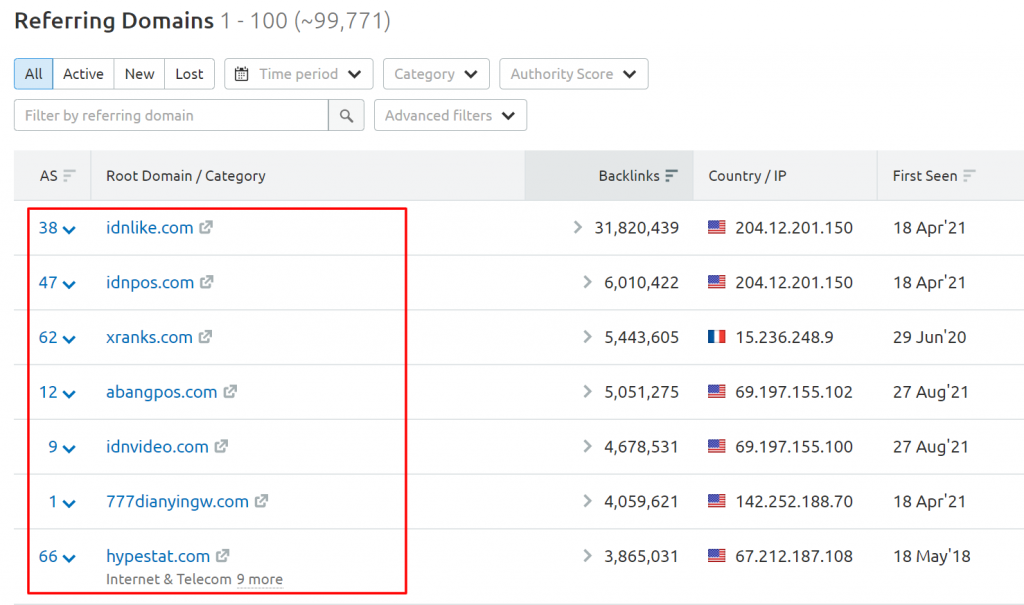
Alternatively, you can head to the Site Explorer on Ahrefs. Here, you can check the “Backlinks” and “Referring Domains” sections.
When you navigate to the “Backlinks” section, you’ll be able to see all the pages that are linking to your competitor’s website. These are all prospective websites you can approach with your content as well.

Similarly, you could head to the “Referring Domains” page. Here, Ahrefs will bring up a list of all the referring domains to the competitor’s website. This can help you understand your competitor’s backlink strategy better.

Now, it doesn’t really end here.
Once you’ve found all the websites that are linking to the home page, you also need to identify why they’re linking to that particular page.
And why should you do that?
It’s because this holds the key to finding out how you can get those websites to link to yours as well.
There’s no easy way to do this.
You’d have to individually open each backlink and conduct an analysis to see where and how the website has linked to your competitor.
It’s based on this analysis that you can then make the next move of approaching the website to get a backlink. To learn more about backlinking, you can even check out our checklist.
2. Discover Backlinks Linking to Individual Pages
While you’ve analyzed the home page of your competitors, it’s also important to look at the other pages of their website.
This is where the list of your page-level competitors can come in very handy. You can use the Backlink Analytics tool to find all those pages that are linking to these page-level competitors.
For instance, let’s take a look at the 2nd ranked post in the SERPs by Moz as shown in the screenshot above.
You can enter the URL in the Backlink Analytics tool and then analyze it. On the page that appears, click on “Backlinks” to see all those pages that are linking to this page.
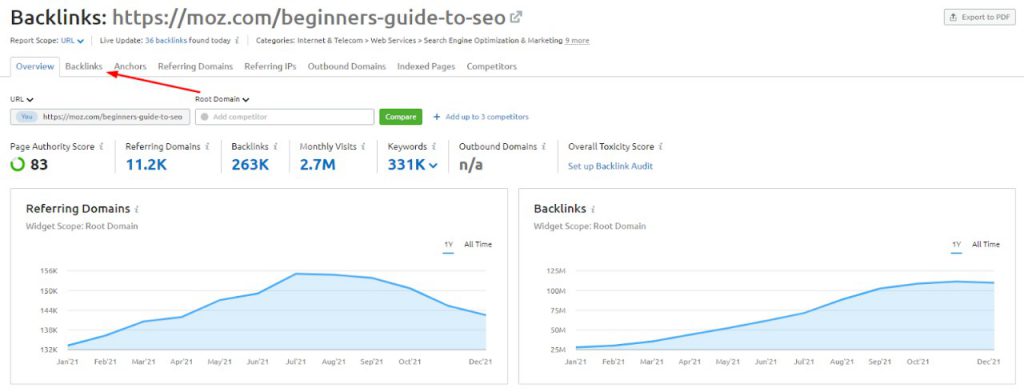
Just as in the case of analyzing the home page, you can check each of these pages to see how they’ve linked back to your competitors. Based on that, you can outline your backlinking strategy to get backlinks from those websites.
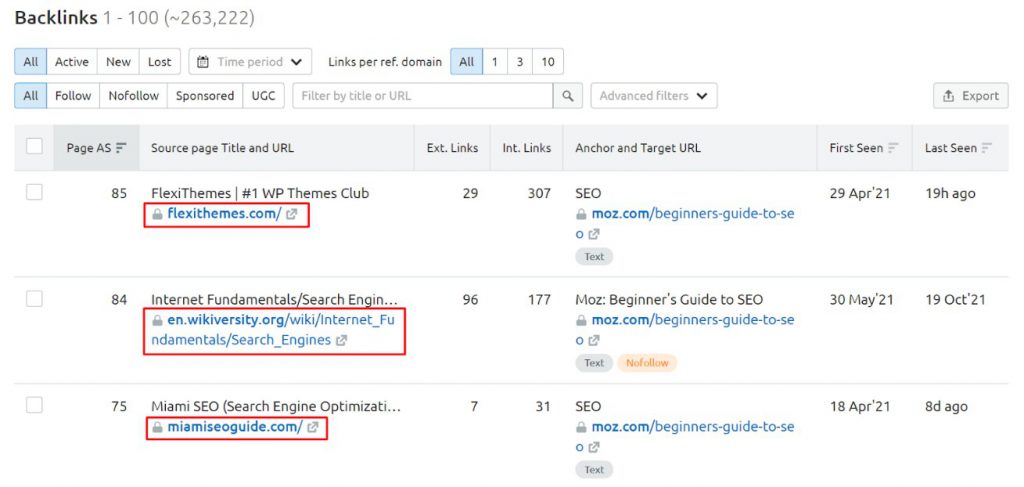
What’s more?
By seeing the backlink profile of your competitors, you’ll also get an idea of what you might need to do to outrank them for those particular keywords.
Wondering how to get your backlinking right? Check out our detailed SEO checklist.

Now it’s time to discover the other 102 steps that will get more organic traffic flowing to your website. Get the SEO Checklist here.
Want to get a sneak peek of what it looks like?
Enter your email and get a free demo version of the SEO Checklist.
3. Find Sites Linking to Multiple Competitors
So, you’ve found websites that have linked to your competitors’ home pages or specific pages.
But that’s not everything. You need to take your analysis further.
In fact, there’s yet another way of finding websites that you can approach for link building. And this can be done by identifying those websites that are linking to not one, but multiple competitors.
And how does this help you?
The reason behind this is simple — if those websites are linking to your competitors, then it’s very likely that they would also link to your website.
So, how can you find these websites that are linking to multiple competitors of yours?
For this, you’d have to use the Link Intersect tool provided by Ahrefs or the Backlink Gap tool on Semrush.
In the Backlink Gap tool, you can enter up to five competitors and check the websites that are linking to them.

This will bring up a list of numerous websites. You’ll be able to filter this list based on the following parameters:

Best: These are the domains that don’t point to you but do point to your competitors.
Weak: These are those domains that point to your competitors more than you.
Strong: These are domains that point to your domain but not those of your competitors.
Shared: These are domains that point to every domain, including yours.
Unique: These are domains that only point to a single domain among competitors.
All: All prospective domains
In this competitor backlink analysis, you need to opt for “Best” to see all the link-building opportunities as these are those websites that are linking to your competitors but not you.
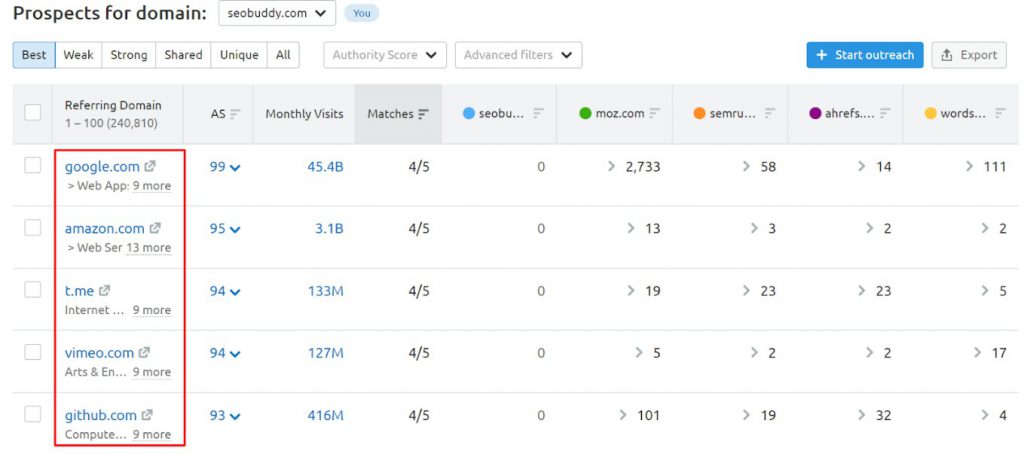
These are the websites that you need to approach to build backlinks. You’d, of course, have to analyze these websites well before approaching them for backlinks.
Alternatively, you could leverage our Link Chest to find backlink opportunities with ease.
4. Discover Competitor Guest Posts
Yet another way of going about competitor backlink analysis is by finding those websites where your competitors have written guest posts.
And how does this help?
When you write a guest post on another website, you’d likely be getting a link back to your website from that post.
So, if a website is open to having your competitors guest blog on it, then it’s likely that they’d be open to you guest posting on it too.
But how do you find websites your competitors have written guest posts on?
Here are a few methods of going about it.
1. Manual Search
This is the simplest approach you can adopt to find guest posts written by your competitors.
You can start by finding the author name under which your competitors regularly write guest posts. This is crucial to discover all the posts written by them on other websites.
Once you’ve found the author name, you can head to Google and use the below search operators:
- “Author name” + “guest post”
- “Author name” + “guest post” -site:competitor.com
- “Author name” + inurl:author
For instance, note how searching for “tim soulo” + “guest post” brings up a list of guest posts written by him on behalf of Ahrefs.
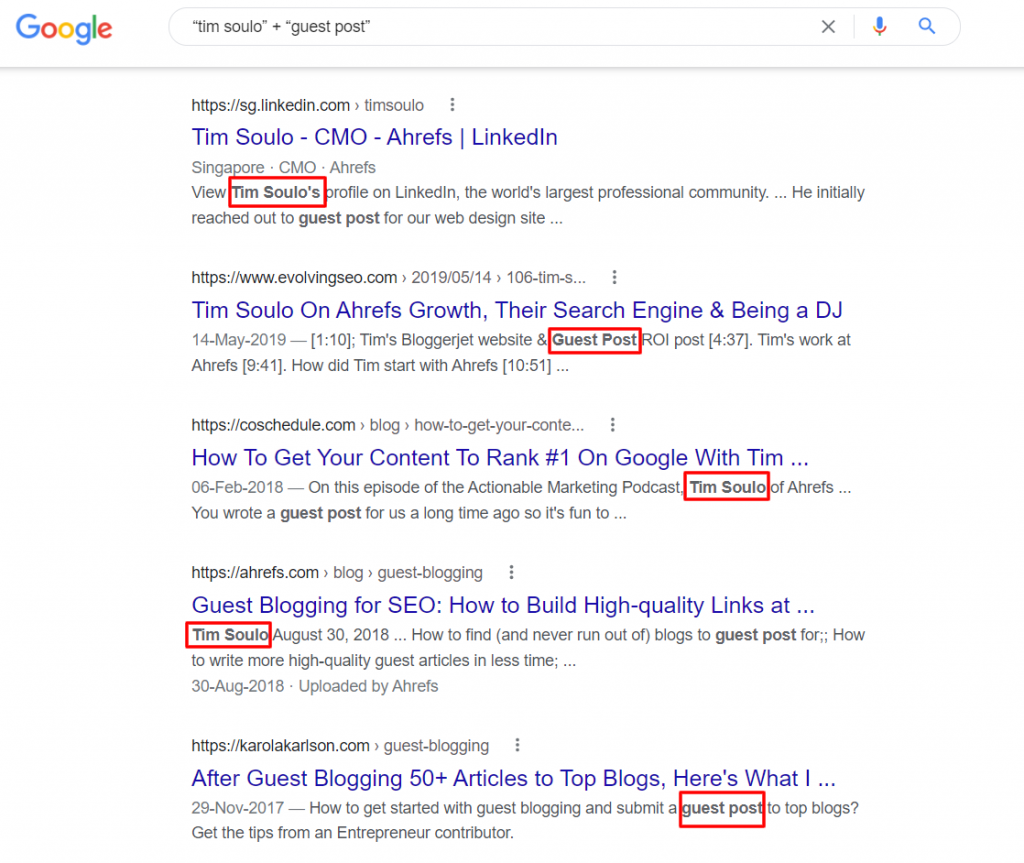
Using these operators for each author will help you get a list of websites on which your competitors have written guest posts.
You can then approach each of those websites and pitch your guest post ideas.
2. Leverage Tools
The other way of finding posts written by a particular competitor is by leveraging tools. You can use Ahrefs Content Explorer for this purpose.
This backlink analysis tool scouts all the posts and then you can filter them based on the author name to find those that are written by your competitors.
All you have to do is use a simple query in the form of “author:author name”.
On doing so, Ahrefs will bring up a list of all the posts that have been published under this name and you can even see a lot of data related to those posts.
This data includes:
- Domain Rating
- Social Shares
- Organic Traffic
- Referring Domains
- Word Count
- Publishing Date
You can then conduct an analysis of this data and decide if you’d like to pitch your guest post ideas to those websites.
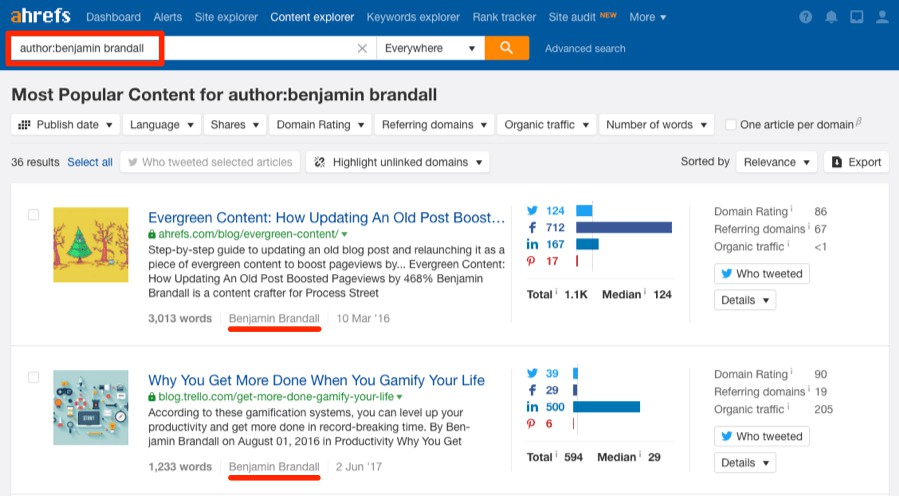
Alternatively, you can use the Topic Research tool provided by Semrush for this purpose. You can search for the author’s name in the tool and this will bring up a list of posts and websites where the author has been mentioned.
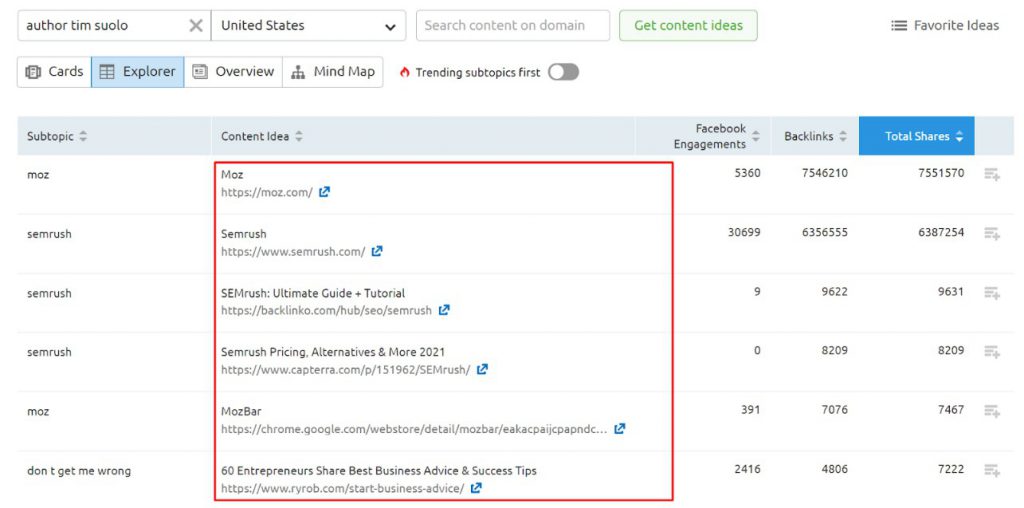
Finding it difficult to discover websites for backlinking? Check out our Link Chest that comes with over 1400 easy-to-get backlinks.
FAQs
1. How do you analyze backlinks?
Here’s how you can conduct an analysis of backlinks:
- Find the website for which you want to conduct backlink analysis
- Choose a backlink audit tool like Semrush or Ahrefs
- Enter the target URL
- Analyze the details related to the backlinks
2. How do you analyze SEO competitors?
Here are the ways through which you can conduct competitor analysis:
- Check their keyword rankings
- Conduct competitor backlink analysis
- Take a look at their paid ad campaigns
- Analyze their brand mentions
- Find their page loading speed
3. What is backlink analytics?
Backlink analytics is the process through which you analyze a particular website’s backlinks to understand its performance and link sources. Typically, backlink analysis is conducted to figure out where you stand. Similarly, competitor backlink analysis is done to get a snapshot of your competitors’ link-building strategy and find new linking opportunities.
4. How do I find my competitor’s backlinks?
Here are some ways through which you can find your competitors’ backlinks:
- Select a competitor audit tool
- Analyze their home page
- Analyze competing posts
- Find sites linking to multiple competitors
- Discover competitor guest posts
5. What are the types of competitors?
There are two major types of competitors when it comes to competitor backlink analysis:
- Domain-level competitors
- Page-level competitors
Final Thoughts
Competitor backlink analysis is an important SEO strategy that brands need to leverage to discover where they stand in comparison to competitors.
It’s also extremely helpful in finding new linking opportunities, which, in turn, can help in boosting your website’s SEO.
So, start by finding your competitors and analyzing their backlinks today. And if this method isn’t enough for you, check out our SEO Checklist to find more backlink-building opportunities.




